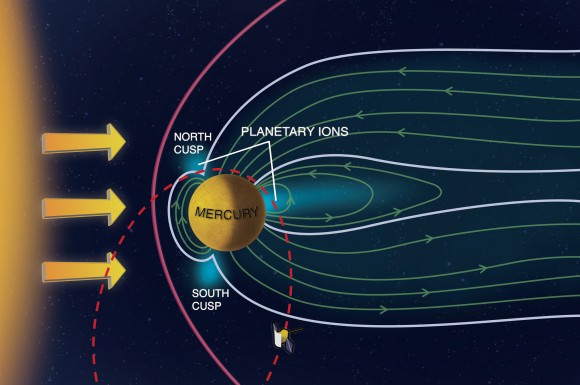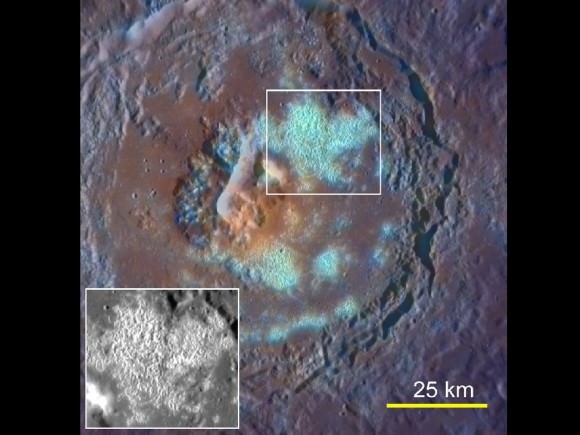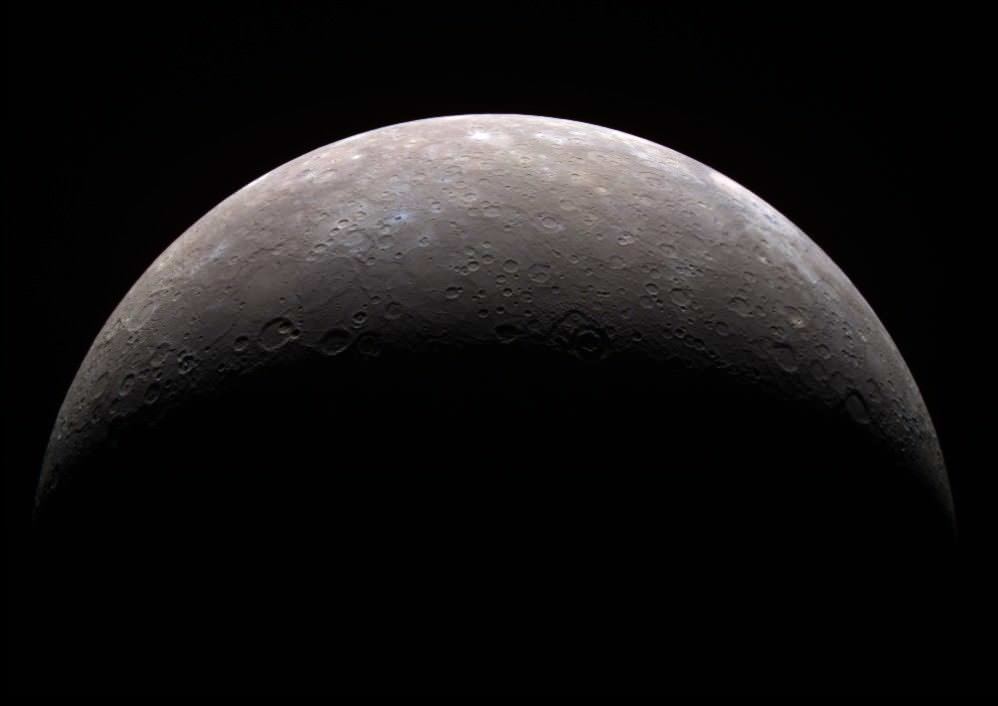[/caption]
According to data from the The Fast Imaging Plasma Spectrometer (FIPS) onboard NASA’s MESSENGER spacecraft, the solar wind is “sandblasting” the surface of Mercury at its polar regions.
Based on findings from one of seven different papers from the MESSENGER mission to be published in the Sept. 30th edition of Science, sodium and oxygen particles are charged in a manner similar to Earth’s own Aurora Borealis.
How are the University of Michigan researchers able to detect and study this phenomenon?
Using the FISP, the scientists at the University of Michigan have taken measurements of Mercury’s exosphere and magnetosphere. The data collected has provided researchers with a better understanding of interactions between Mercury and our Sun. FIPS data has also confirmed theories regarding the composition and source of particles in Mercury’s space environment.
“We had previously observed neutral sodium from ground observations, but up close we’ve discovered that charged sodium particles are concentrated near Mercury’s polar regions where they are likely liberated by solar wind ion sputtering, effectively knocking sodium atoms off Mercury’s surface,” said FIPS project leader Thomas Zurbuchen (University of Michigan).
In a UM press release, Zurbuchen added, “We were able to observe the formation process of these ions, and it’s comparable to the manner by which auroras are generated in Earth’s atmosphere near polar regions.”
Given that Earth and Mercury are the only two magnetized planets in the inner solar system (Mars is believed to have had a magnetic field in its past), the solar wind is deflected around them. The solar wind has made recent news due to recent outbursts from the Sun causing visible aurorae, caused by the interaction of charged particles from the Sun and Earth’s relatively strong magnetosphere. While Mercury does have a magnetosphere, compared to Earth’s it is relatively weak. Given Mercury’s weak magnetosphere and close proximity to the Sun, the effects of the solar wind have a more profound effect.

Image Credit: Shannon Kohlitz, Media Academica, LLC
“Our results tell us is that Mercury’s weak magnetosphere provides very little protection of the planet from the solar wind,” Zurbuchen said.
Jim Raines, FIPS operations engineer (University of Michigan) added, “We’re trying to understand how the sun, the grand-daddy of all that is life, interacts with the planets. It is Earth’s magnetosphere that keeps our atmosphere from being stripped away. And that makes it vital to the existence of life on our planet.”

The MESSENGER team also released other results from the mission, including new evidence that flood volcanism has been widespread on Mercury, the first close-up views of Mercury’s “hollows,” and the first direct measurements of the chemical composition of Mercury’s surface.
MESSENGER, as well the the Mariner 10 flyby mission saw unusual features on the floors and central mountain peaks of some impact craters which were very bright and have a blue color relative to other areas of Mercury. This type of feature is not seen on the Moon, and were nicknamed “hollows.”
Now, with the latest MESSENGER data, hollows have been found over a wide range of latitudes and longitudes, suggesting that they are fairly common across Mercury. Many of the depressions have bright interiors and halos.
“To the surprise of the science team, it turns out that the bright areas are composed of small, shallow, irregularly shaped depressions that are often found in clusters,” says David Blewett, a staff scientist at the Johns Hopkins University Applied Physics Laboratory (APL) in Laurel, Md., and lead author of one of the Science reports. “The science team adopted the term ‘hollows’ for these features to distinguish them from other types of pits seen on Mercury.”
Blewett added the hollows detected so far have a fresh appearance and have not accumulated small impact craters, indicating that they are relatively young.
If you’d like to learn more about the MESSENGER mission, visit: http://www.nasa.gov/mission_pages/messenger/main/index.html , or http://messenger.jhuapl.edu/
Sources: MESSENGER News Release NASA


Not the smartest cookie here but why the poles, does mercury have a dynamo created magnetic field? Thought mercury had none!
As stated in the article, Mercury does have a magnetic field. The field is very weak compared to ours, but it does have one.
mercury has a large iron core for its size. that combined with how close it is to the sun, may cause it to have a dynamo. that is my understanding. there are theories of why it has a larger iron core. possibly smashed by another planetoid early or the sun knocked all lot of its mantle off in early violent years.
You know, I get tired of this particular piece of “folk astronomy”. (Ironic, here.) It isn’t as if it is a secret that the solar wind is not the major atmospheric loss process for Earth, even Wikipedia keeps up:
“A common erroneous belief is that the primary non-thermal escape mechanism is atmospheric stripping by a solar wind in the absence of a magnetosphere. […] Recent models indicate that stripping by solar wind accounts for less than 1/3 of total non-thermal loss processes.”*
So we would have had a little less atmospheric pressure in the absence of intrinsic field (because the remaining extrinsic induced field would now dominate instead, even if much weaker). Seems to me nothing much would have changed: we would certainly see life and have the same pathways to complex life as today.
The difference is that we wouldn’t have a cool phenomena to study up close. And of course, historically anything with magnets are excitingly magic.
[Well, rather exciting and mysterious even after studying EM theory and solid state physics of magnetic materials, I’ll give it that. Magnetism was our only everyday relativistic low-velocity effect before the advent of GPS, for one.]
Instead space weather and its planetary interactions are really interesting on their own!
If we need a societal anchor, it and possible “weather shields” are important for technological infrastructure, from power grids to interplanetary missions!
[- Dude, what is with all those exclamation marks suddenly! – I don’t know, they started after my 2nd cup of coffee! – Well, please stop drinking as much then!]
——–
* I think the intented meaning is “without intrinsic field”. Nevertheless, the situation is clear.
Also, IIRC CMEs are responsible for another 1/3 against solar wind loss, i.e. ~ 1/10th of total loss. (Thermal escape on Earth is primarily hydrogen and perhaps some helium.)
Volcano’s (flood) on Mercury! How cool is that? Are we to assume that the charged/radioactive potassium and sodium particles found at the poles are the source of the ‘bright features’ previously assumed to be possible ice deposits in the shadows of craters?